MRRL Hall of Fame
MICHAEL ERLEWINE and THE PRIME MOVERS
- Details
- Category: Inductees
- Created: Friday, 20 March 2015 16:52
- Written by Gary Johnson
Michael Erlewine’s interest in traditional folk music and authentic blues led to an early friendship with Bob Dylan and the eventual formation of the Prime Movers Blues Band with his brother Dan Erlewine in 1965. The Prime Movers were the first white band in the Ann Arbor/Detroit area to be playing blues and what might be called the “new music” of the 1960s. The group was also the launching pad for the career of Iggy Pop and played an important behind-the-scenes role at the legendary Ann Arbor Blues Festivals in 1969 and 1970. Two decades after the demise of the Prime Movers, Michael Erlewine launched the All-Music Guide, the first and largest database of discographic information found on the Internet.
Michael Erlewine was born in Lancaster, Pennsylvania on July 18, 1941, the first son born to Ralph and Phyllis Erlewine. Michael and his family moved to Ann Arbor when he was in the sixth grade. His father worked for the Ford Motor Company in Dearborn. Although he didn’t grow up in a musical household per se, his parents bought records and liked folk music, especially Marais & Miranda and Josh White. His mother was a talented pianist who could play classical music as well as the ragtime style of Joe “Fingers” Carr.
As a teenager during his high school years at Ann Arbor Pioneer, Erlewine loved Chuck Berry, Little Richard, and Fats Domino along with the doo wop hits of the day like “Earth Angel” by The Penguins. When he and his friends were old enough to drive, they would go out to Portage Lake beyond Dexter, Michigan, to dance at a little club and try to pick up girls. 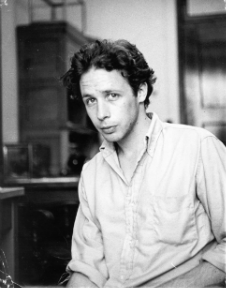 Michael Erlewine 1960's
Michael Erlewine 1960's
The Ann Arbor teen scene in the 1950s was much like what was portrayed in the hit movie American Graffiti. Michaels’ evenings were often spent cruising and hanging out at the drive-ins around town or, as a member of the “Tachs” car club, doing some quarter-mile racing on back roads in a 1951 Ford Victoria hardtop.
Michael didn’t finish high school much to the dismay of his parents who had both graduated from the University of Michigan. He never liked school, even as a youngster. Phyllis Erlewine remembered that he once skipped school as a kindergartner, and after searching frantically, she found him standing at a construction site watching earth-moving equipment. Michael said that he didn’t learn much from his teachers in school; his mentors were people with vital life experiences, and this is why he related so well to the authentic blues artists.
Being the oldest of the five boys in the family, Michael didn’t have a strong male role model other than his father. Ralph Erlewine was a comptroller, a man who worked with money and figures, something Michael was never that interested in. His relationship with his father was somewhat distant, as Ralph didn’t like to talk about anything personal. His mother, Phyllis, was the one he could talk to. Michael never remembered having a deep conversation with his father; but he loved him and he knew his father loved him back.
In the late 50s liquor could not be sold by the glass in the bars of Ann Arbor. Since they could only serve beer, the bars were not making enough money to hire bands and all of the music was being performed at house parties. The entertainment included jazz pianist Bob James who was, at that time, attending the University of Michigan. Ann Arbor had a vibrant jazz scene near the end of the Beat Era, and interest in poetry, marijuana, and European films were all part and parcel of “being down”. 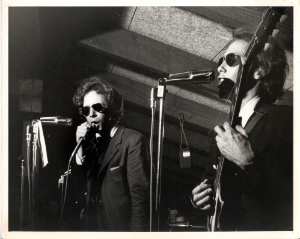 Michael and Dan Erlewine
Michael and Dan Erlewine
Michael and like-minded friends were intrigued and would try to hang out with college kids and the town’s beatniks, but they were barely tolerated. Even though they wouldn’t give Michael and his buddies any dope, the high schoolers were so into it that they would snort the ashes of the smoked joints in vain attempts to get high.
In 1960, Erlewine hitchhiked to Venice, California to become a beatnik. He lived in an abandoned frozen food locker at the Gas House, a famous coffee house located on Venice Beach. His dwelling was a former walk-in freezer that had wooden benches that he slept on. Michael’s goal was to be a painter working in oils; and he hung out with a collection of poets, artists, and musicians while there.
Michael then moved to North Beach in San Francisco and often frequented the City Lights Bookstore. The “Beat Generation” had already peaked by the late 1950s, however, and Erlewine drifted into the folk music scene at the start of the new decade after he returned to Ann Arbor in 1961. He became part of the University of Michigan Folklore Society, and he began traveling with an extraordinary instrumentalist and friend named Perry Lederman, who was an expert at the three-fingered style of guitar picking first made popular by Merle Travis. 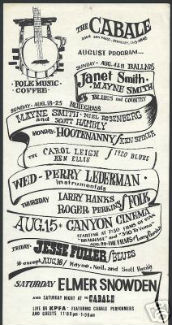
Lederman was born in Brooklyn, New York, and was inspired to learn guitar after seeing Tom Paley perform at Washington Square Park in Greenwich Village. While attending the University of Michigan, he and Erlewine joined a group of folk musicians who traveled a circuit that included Ann Arbor, Boston, New York, Oberlein, Chicago, Madison, and Berkeley. Erlewine estimates that he and Lederman hitchhiked from Ann Arbor to New York, and back, at least ten times. Lederman later moved to Berkeley and appeared regularly at the Cabale folk club on San Pablo Avenue.
Erlewine’s first instrument was the guitar. Lederman was skilled at finding old Martin guitars, scavenging them from attics and garages, and then restoring and selling them. Aided by Lederman, he learned the finger picking style on some classic Martin guitars but he never considered himself a great player. At this point, Michael was just a traveling companion and not a performer. That would come later in the Prime Movers.
Bob Dylan traveled this folk circuit before recording his first album, and Erlewine hitchhiked with Dylan a few times in 1961. He even helped Dylan put on a concert at the Michigan Union in Ann Arbor. Erlewine remembers sitting with the singer smoking cigarettes and drinking coffee the following day. Dylan was worried about the upcoming review of his performance in the Michigan Daily. Erlewine recalled that Dylan hitchhiked out of town to his next gig in Chicago after reading the very positive review in the paper. 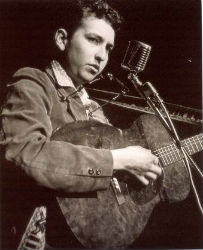 Dylan 1961
Dylan 1961
Because of his high test scores, Ralph and Phyllis later managed to help get Michael enrolled at the University of Michigan despite not having a high school diploma; but again it didn’t work for him. Michael attended classes for three weeks and decided that college was just like high school and dropped out. He wanted to be out in the world, and he did not want to be formally educated. His decision was another terrible blow to his parents.
During this time, Ann Arbor had a beat-style coffee house called The Prometheus. Al Young, who is now the poet laureate of California, used to play music and hip comedy records at The Prometheus while Erlewine and other beats would drink coffee and smoke cigarettes. Young, a handsome black musician and poet, attended the U of M and he was regarded as one of the most influential people on campus. After Young moved to California in the early 60's, he often performed at folk clubs with Perry Lederman.
When groups like the New Lost City Ramblers or The Country Gentlemen appeared in Ann Arbor, they would generally stay with members of the Folklore Society who had an extra room or spare couch rather than in motels. Back then, they were all trying to preserve traditional folk music which was thought to be dying. The idea was to try to trace folk music to its roots and renew it. Even Dylan wasn’t writing his own songs at this point. The artists who were considered cool were the ones who had traced a song back as far as possible and then performed the most authentic version. 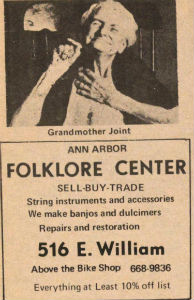
This folk movement, which included the Newport festivals, also extended to blues music – especially acoustic blues, also called country blues. The folk enthusiasts treated the country blues just like they treated English, Scottish, and European folk music in that it had to be saved or restored. By the mid-60s, however, they realized that blues wasn’t really dying and didn’t need their help. It was very much alive and being played in black clubs and bars, especially in Chicago.
In 1964, Erlewine decided to move to Berkeley and study independently with a teacher he knew. His friend, and future Prime Mover, Robert Sheff was also in California at that time. Once again, his educational plan didn’t work out. Berkeley was a big distraction; and when Erlewine took LSD that had been produced at the Sandoz pharmaceutical laboratories for the first time in May of 1964, the experience changed his life.
Lysergic acid diethylamide, commonly called acid, was pretty new at that point and was reputed to alter the mind permanently or, at the very least, reorient the user’s perspective of the world. Erlewine had tried other drugs – marijuana, peyote, speed and codeine, but it was only LSD that really got his attention. It introduced him to the dharma – to the way that things actually are in the mind; that the outside world that he saw was the result of his own inner projection including his likes, dislikes, and prejudices. It also inspired his study of his own mind.
What most people generally think of as the 1960s didn’t really start until the middle of the decade. Erlewine believes that LSD was the catalyst for what we call the 60s: “It was a game-changer and mind-changer. Not everyone took acid, but the leaders of the hippie revolution did. It changed an entire generation one person at a time. It gave them the courage and the will to overcome the status quo and look to a new reality – one based on direct experience. It broke out all over the country and then spread across the nation and the world.”
Despite becoming the assistant manager of Discount Records in Berkeley, Erlewine had become homesick for Michigan by the end of the year. He discovered that he had no real emotional connection to California, and he also lacked the kind of network of people that he enjoyed back in Ann Arbor. 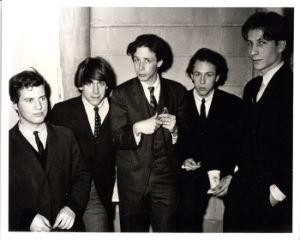 The Prime Movers: (L to R) Robert Sheff, Jim "Iggy" Osterberg, Michael Erlewine, Dan Erlewine, Jack Dawson
The Prime Movers: (L to R) Robert Sheff, Jim "Iggy" Osterberg, Michael Erlewine, Dan Erlewine, Jack Dawson
Back in Ann Arbor in the summer of 1965, Michael and his brother Dan decided to start a band. Unbeknownst to them, the band that would become the Grateful Dead started around the same time in San Francisco. Like the members of the Dead, the brothers didn’t want to be just another pop band playing the teen circuit and fraternities, although they would eventually have to do a lot of that to pay the rent.
Michael’s powerful experiences the previous year in Berkely showed him that the “crewcut mentality” under which he was raised was breaking up. Something new was being born and he felt that he and Dan were going to be part of it. Michael came up with the name Prime Movers; the name indicating that they were going to be something new, the beginning of a movement. Soon they became known as the Prime Movers Blues Band.
Michael and Dan were inspired by the first Rolling Stones’ album and the band Them with Van Morrison, but their most important model was the Paul Butterfield Blues Band, who released their first album in late 1965. The original Prime Movers’ lineup was Michael Erlewine on Chicago-style harmonica and lead vocals, Dan Erlewine on lead guitar, Robert Vinopal on bass, and Michael “Spider” Wynn on drums. Vinopal left the band shortly thereafter and was replaced by Jack Dawson on bass. They played all kinds of tunes so that they could get gigs, but soon settled on the blues and a little gospel. Michael was studying the blues 24-7 and living them as well. He especially loved the modern electric blues players that came out of Chicago. 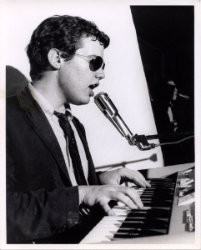 Robert Sheff
Robert Sheff
The brothers lived in a house at 114 N. Division with keyboardist Robert Sheff. Originally from Texas, Sheff was now back in Michigan after teaching modern music at Mill Valley in Califronia. Michael had met him when Sheff was part of Once Music, a collection of Ann Arbor composers influenced by John Cage. They would put on musical events, called “happenings”, featuring avant-garde performances. 114 N. Division soon became known around town as the Prime Movers house; and the band members were thought of as men about town, figures at the front of alternative culture.
Peter Andrews operated a teen club called Mother’s in the Ann Arbor Armory; and the Prime Movers soon became the club’s house band, often serving as the backing group for national hit-makers like The Shangri-Las and The Contours when they appeared at the club. Robert Sheff was very important at these backing gigs because the rest of the band couldn’t sight read and they were required to learn new songs in a very limited amount of time. Pete Andrews later produced the Ann Arbor Blues and Jazz Festivals in the 70’s with John Sinclair.
Jeep Holland had a lot to do with the Prime Movers being booked at Mother’s, as well as other teen clubs like Ann Arbor's 5th Dimension, Mt. Holly near Flint, and Daniel’s Den in Saginaw. Holland lived just three blocks away and was managing the campus branch of the Discount Records chain. Holland quickly branched out into helping local bands, first in management, and then by recording them on his A-Square label. The Rationals were the first and most successful of his bands, getting a lot of attention in Southeast Michigan and releasing 45s on Holland’s A-Square record label. The Rationals had a minor hit on Billboard’s Hot 100 in 1966 with their cover of Otis Redding’s “Respect” after it had been leased to Cameo Records for national distribution. 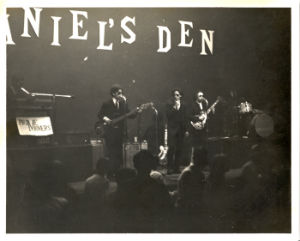 Prime Movers at Daniel's Den
Prime Movers at Daniel's Den
Despite Holland’s knowledge of pop music and fascination with British bands, he and the Prime Movers were an uncomfortable fit. The band thought he was square, since he didn’t know the blues, and they bristled at his insistence that they perform in suits; not to mention his booking them to play the teen club circuit. Although Holland was the band’s manager in name, the group was basically unmanageable and the association ended without the Prime Movers ever recording anything for A-Square Records.
The Prime Movers quickly developed a social circle that followed the group. The two most interesting people who were on the periphery of the Prime Movers and also at the top of the social scene in the alternative community in Ann Arbor were David “Panther” White and Lynn Goldsmith. White was a natural comic and intellectual who made prize-winning art films, and he was friends with future Prime Movers’ drummer J. C. (Jesse) Crawford. Goldsmith, who was nicknamed “Famous” for her larger-than-life personality, would go on to fame and fortune as a rock and roll photographer. Goldsmith was gorgeous, cool, and the center of everyone’s attention even at this early point in her life.
When original drummer Spider Wynn left the band in late 1965, Michael Erlewine persuaded Jim Osterberg of The Iguanas to take hi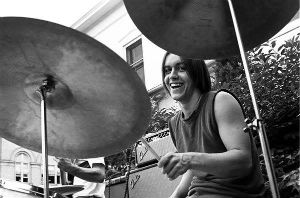 Jim "Iggy" Osterbergs place. The Iguanas were a British Invasion-style band that regularly played area teen clubs and frat parties and were looked down on by the self-styled intellectuals and blues scholars in the Prime Movers.
Jim "Iggy" Osterbergs place. The Iguanas were a British Invasion-style band that regularly played area teen clubs and frat parties and were looked down on by the self-styled intellectuals and blues scholars in the Prime Movers.
Osterberg was a talented drummer, but his new band called him “Iguana" for a while, just to remind him where he came from and keep him in line. After a while they shortened it to “Iggy”. Erlewine recalls that the Prime Movers basically taught Iggy the liberal arts. “Having grown up in a trailer park, Iggy didn’t know anything about literature, classical music, or philosophy. We sophisticated him up pretty good.”
Iggy was not a wild man pushing the envelope when he was in the Prime Movers. Michael said he was always a gentleman and that they never argued. The band loved him and he was fun to be around, but he was also ambitious. There is a myth that he was a “lady killer” in the Prime Movers. Michael says that he was not aggressive with women – they had to come to him. The girls loved him – all he had to do was bat his long eyelashes and they would be all over him.
Michael Erlewine was an exacting boss in regards to practicing and the taskmaster in the band. Other members were content to sit back and smoke weed but he believed in practice. That dedication to work might help explain the fact that 37 different musicians moved through the band over time. One of these was Ron Asheton, Iggy’s old high school acquaintance, who auditioned on bass guitar and survived for a couple of gigs before being demoted to roadie and general helper.
Late 1966 saw the Prime Movers make the first of several road trips to Chicago, the home of the blues. The city was less than a 3-hour drive from Ann Arbor, and the entire band (including Iggy) piled into their Dodge van and headed for the Windy City. They knew nothing about Chicago, or no one who lived there, so they spent most of their time digging through bins at a variety of small record shops in the city. They found 45s by Little Walter, Muddy Waters, Junior Wells, Otis Rush and many others. 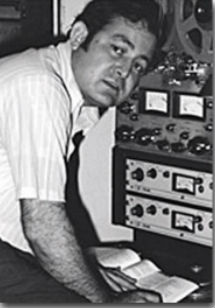 Bob Koester
Bob Koester
Both Michael and Dan were record buyers and also record finders. They searched out classic blues recordings for their purist sets that drew from songs by Chicago blues artists, and even some gospel tunes by the Swan Silvertones. One of their favorite shops was the Jazz Record Mart in Chicago. The proprietor was Bob Koester, who had been producing blues records for almost 10 years. In the process he had formed Delmark Records, one of the great blues labels of all time. Koester was kind enough to chaperone the band to several of the blues clubs located in Chicago’s South and West sides. These were predominantly black clubs that a group of young white guys might have been afraid to go into.
It was in a small basement club on the corner of 48th and Indiana called Theresa’s Lounge where Michael first saw Junior Wells. He was on stage arguing with Little Walter. It was in these small Chicago blues clubs that Erlewine discovered not only great players but also great human beings who had a wealth of life experiences and were fun to hang out with.
Michael considers the Delmark LP, “Hoodoo Man Blues” by Junior Wells’ Blues Band, featuring a young guitar player named Buddy Guy, one of the greatest blues albums of all time. The Koester-produced album was recorded in 1965 and is considered a landmark LP by blues critics. When asked why the Prime Movers didn’t ever record with Koester, Michael Erlewine replied: “A.) We were never asked, and B.) He was into authentic blues and we were students of the blues; and out of sheer respect I wouldn’t have even thought of that. I worshipped the blues masters and all I wanted to do was to hear and learn it. I didn’t presume to try to do it at the level of Howlin’ Wolf or Muddy Waters.” That being said, Paul Butterfield, whose band had become very popular recording blues standards, once stated that the Prime Movers were the second-best blues band in the country; so the potential to be successful recording artists was always there.
Back in Ann Arbor, they often played the blues at a black bar called Clint’s Club on Ann Street for $35 a night for the entire band. Clint’s was next door to another bar that catered to young blacks who were into R&B and soul music. They were embarrassed that their parents frequented Clint’s where a group of white guys were playing the blues. Clint’s black patrons liked the Prime Movers because they played the music they liked and that their intent was pure; but they would also good-naturedly disrespect them after a number by not clapping and then saying things like, “Let’s give these guys the clap!” 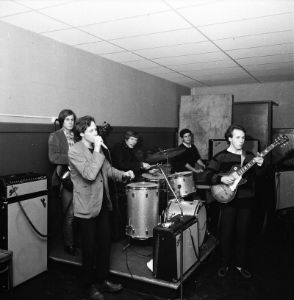 Prime Movers at the Schwaben Inn
Prime Movers at the Schwaben Inn
The Schwaben Inn was another spot at which the band often played. Michael Erlewine described the venue: “Back in 1966 The Schwaben Inn was a large, low-ceiling place in the middle of the block at 215 S. Ashley Street. On the ground floor at street level there was a wide room with a cement floor and a bar along the back. The place stunk of stale beer and cigarettes. On your left as you came in was a little bandstand, raised not more than a few inches, where we played.”
“Our band, the Prime Movers Blues Band, would often play at the Schwaben. There was only one problem. Two very different types of people liked to come to the Schwaben to hear us play, the townies and the college students. I was a townie. We called the students ‘pinheads’. These two groups did not get along and huge fights would break out. I remember one fight where it took nine police cruisers to break it up.”
Jim “Iggy” Osterberg was a quick learner on the drums and worked hard at it. When Iggy first saw the legendary double shuffle that Sam Lay performed with the Butterfield Blues Band, he couldn’t figure out how to do it. After Lay showed him how, Iggy worked for weeks until he could master it.
Iggy’s ambition, however, would cause him to leave the band near the end of 1966. There was no argument with Michael Erlewine when he left the Prime Movers simply because he didn’t tell him. Afraid of a confrontation, Iggy broke the news to Dan Erlewine and left for Chicago the next day, hoping to learn more under the tutelage of Sam Lay. Iggy was helped out by Bob Koester while in Chicago, and he got drumming gigs with Big Walter Horton, JB Hutto, and James Cotton before eventually returning to Michigan to form The Stooges with Ron and Scott Asheton, and Dave Alexander. 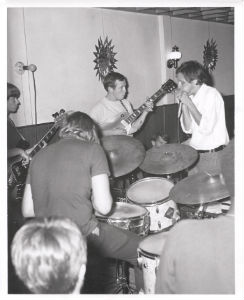 J.C. Crawford on drums
J.C. Crawford on drums
The Prime Movers replaced Iggy with J.C. (Jesse) Crawford, who they recruited from Eastern Michigan University in nearby Ypsilanti. Crawford would later become involved with the MC5 and John Sinclair's White Panther/Rainbow People’s Party.
Although the band played with the MC5 on many occasions at the Grande Ballroom in Detroit and he is friends with John Sinclair today, Erlewine wasn’t too enamored of White Panther/Rainbow People’s Party relocating to Ann Arbor after they were chased out of Detroit by the police and the F.B.I. John Sinclair and his organization, which included the MC5, assumed that everyone wanted the aggressive attitude they were bringing to Ann Arbor from Detroit. Even though the group did some good things, their baiting of the police in West Park and making fun of them was something that the Prime Movers would never do. They were Ann Arbor natives and they wanted the police to join them and be part of it rather than become adversaries.
The band regularly played Detroit clubs like the Living End, the Chessmate, and the Wisdom Tooth. They also appeared frequently at Mother Blues in Chicago. In 1967, the Prime Movers toured the West Coast and spent the Summer of Love in San Francisco, living at the Sausalito Heliport and playing at place like the Matrix, the Straight Theater, the Haight A, and the Fillmore West, where they opened for Cream.
The Prime Movers never made much money, however, and its members were barely eking out a living. Michael Erlewine cleaned toilets for many years at a complex on Liberty Street. They would sometimes play frat gigs for food, and Erlewine remembered getting a large tray of salami at one such gig and Robert Sheff frying it up at the house for the next week. 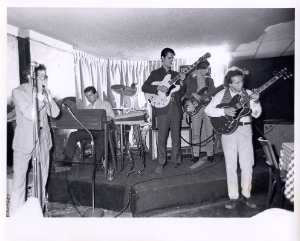 At the Living End in Detroit
At the Living End in Detroit
The band’s biggest chance to sign a recording contract came via Motown. Barney Ales, vice-president of Motown Records, was starting a new subsidiary that would focus on albums and the new type of music that was having an impact on the popular music front. Rather than try to duplicate Motown’s successful formula of focusing on singles featuring music played by session musicians, Ales’ new division would be composed of self-contained bands who would concentrate on making albums that would then be marketed on FM stations playing progressive rock.
At one point, representatives of the new subsidiary (soon to be named Rare Earth Records) came to Ann Arbor in an effort to sign the Prime Movers. Although the band was sometimes racially mixed, the Prime Movers were predominantly white. They were driven around in the Motown limousines and wined and dined. Motown even arranged for Michael and Dan to have a lunch with the Everly Brothers.
It was a thrill to meet two of their heroes, but Motown wanted the band to record the music they gave them, with no freedom on their part to choose anything. Although Motown was very knowledgeable about what produced hits, Michael was not interested in being what he called “their puppet”. That ended things with Motown, and they might have passed up what could have been their big break.
Instead, the Prime Movers continued to play and study the blues they loved while the Rare Earth label signed a multitude of acts: The Pretty Things from England, The Easybeats from Australia, and several Michigan-based artists including SRC/Blue Scepter, The Ones, and Stoney and Meatloaf. The only real success story on the subsidiary, however, was the band Rare Earth, which charted five Top 20 singles and four Top 40 albums during the early 1970s. 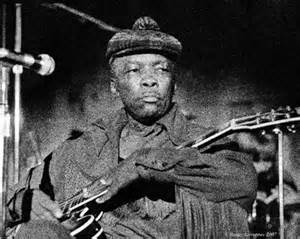 John Lee Hooker Ann Arbor Blues Festival
John Lee Hooker Ann Arbor Blues Festival
The first Ann Arbor Blues Festival was put on in the summer of 1969 by the Student Activities Committee at the University of Michigan. The man in charge was John Fishel, who insisted that they book the authentic black blues artists rather than some of the British blues bands that were popular at the time. The Prime Movers were not U of M students but they were linked to the blues because they had been listening, studying, and playing the music for some time. They had also traveled to Chicago to watch it being performed by blues greats. They knew more about the blues than the U of M students putting on the festival, so it was a natural fit for them to become involved. Michael was excited beyond description that most of his musical heroes were going to be playing in Ann Arbor.
Michael and Dan were put in charge of taking care of the blues artists. The brothers were backstage at the festival serving them food and drink out of the back of their father’s station wagon. The blues greats included Howlin’ Wolf, Muddy Waters, Junior Wells, Buddy Guy, Magic Sam, Big Joe Turner, Bobby Blue Bland, Clifton Chenier, James Cotton, Dr. Ross, Lowell Fulson, John Lee Hooker, Albert King, B.B. King, Freddie King, Lightnin’ Hopkins, Son House, Victoria Spivey, Sippie Wallace, Roosevelt Sykes, Hound Dog Taylor, and Johnny Winter. It was a blues paradise!
Michael and Dan’s father and younger brothers were also backstage, especially in 1969 and 1970. Ralph Erlewine had been an actor in college and a performing magician, so he was comfortable hobnobbing with other performers. He and Roosevelt Sykes hung out a lot at the festival and drank beers together. Although Ralph and Michael didn’t talk much at the festival, it was one of the most together times they ever shared; a situation where Ralph was loving what his son loved.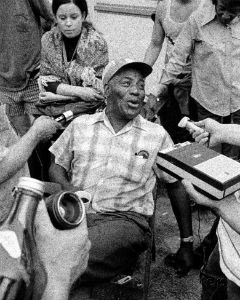 Howlin' Wolf Ann Arbor Blues Festival
Howlin' Wolf Ann Arbor Blues Festival
Occurring two weeks before Woodstock in August of 1969, the Ann Arbor Blues Festival was the first time the blues was presented to a large white audience. It was also a celebration for the artists in that their music was being appreciated and they were being well taken care of. Michael interviewed the blues artists during the 1969 and 1970 Ann Arbor Blues Festivals and the 1972 and 1973 Ann Arbor Blues and Jazz Festivals using audio at first and then video.
In addition, it was the first time that most of the authentic blues artists had been invited to a large festival and many arrived ahead of the event. They were housed at the Michigan League or in the West Quad on the U of M campus. Michael and Dan spent the evenings with artists like Big Mama Thornton, Fred McDowell, and Arthur “Big Boy” Crudup, drinking whiskey and getting to know them.
The Prime Movers began to fade away in the early 1970s. Bob Sheff had left to join the Charging Rhinoceros of Soul, and Dan Erlewine joined Sam Lay’s band as lead guitarist. It finally petered out in 1971 when Michael Erlewine got married. At the end, it was just Michael playing piano in a band he formed called Ann Arbor, and then in Ann Arbor Heartsong. He and Dan also appeared infrequently as the Prime Movers for special performances at Ann Arbor clubs like Mr. Flood’s Party or the Depot House.
Dan Erlewine , who had picked up the guitar before his older brother and was much more accomplished on the instrument, started what was to become his career as guitar repairman and builder back in 1963 when he apprenticed at the Herb David Guitar Studio in Ann Arbor. Since that time, he has owned and operated his own shops in Ann Arbor and Big Rapids, and is currently in business in Athens, Ohio. 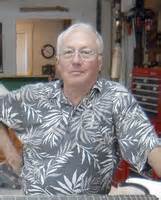 Dan Erlewine
Dan Erlewine
In 1984, Dan produced Dan Erlewine’s Guitar Hospital, a seven-volume series of videotapes on guitar repair, maintenance, and set up. In 2001, he produced Dan Erlewine’s Guitar Shop, an all-new DVD series on the same subjects. Dan was also the monthly repair columnist for Guitar Player magazine for fifteen years, and a frequent contributor to Bass Player magazine, Guitar magazine, and Vintage Guitar magazine. Dan is also the author of numerous books including Guitar Player Repair Guide, How To Make Your Electric Guitar Play Great, and Gibson’s Fabulous Flattops, published by Hal Leonard.
Robert Sheff went on to tour with the Carla Bley Band and Iggy Pop in the 70s. From 1971 to 1982 he was a Lecturer and Instructor of Music at Mills College in Oakland, California. Sheff moved to New York in 1983, and under the name “Blue” Gene Tyranny, he became a self-employed composer/performer: solo and group concerts, audio consultancy, film/video/CD-ROM soundtracks, and commissioned work. He has performed extensively in hundreds of concerts throughout the U.S., Canada and Europe, and also in Mexico and Brazil.
“Blue” (Sheff) collaborated on numerous works for theater and dance and created over 40 soundtracks for film and video. He has received a Bessie Award for Composition, a NYFA Composer Fellowship, a NYSCA grant, and an OBIE for musical production. In addition, he wrote the Avant-Garde section of the All-Music Guide (4 editions) and wrote hundreds of essays and reviews for their website. 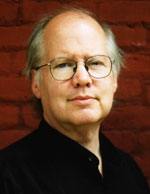 "Blue" Gene Tyranny a.k.a. Robert Sheff
"Blue" Gene Tyranny a.k.a. Robert Sheff
The only existing aural records of the Prime Movers are a couple of live performances that were captured on reel-to-reel tape recorders at what are believed to be sets at Clint’s Club and at the Schwaben Inn. The tapes were found in a box in Stephen Erlewine’s basement a few years ago. Michael had the tapes restored and then remastered at the Glenn Brown Studios in East Lansing. Some of the music is not of the highest quality, but Michael wanted to publish it, warts and all. Dan Erlewine was opposed, however, since it didn’t show the band at its best; and the recordings remain unreleased.
In the years following the demise of the Prime Movers, Michael Erlewine became a systems programmer and a very well-known astrologer. In 1977, he was the first person in the world to program on a microcomputer the celestial movements of the planets for astrologers. His Matrix Software is second only to Microsoft as the oldest software company on the Internet. Erlewine has written 50 books and hundreds of articles on astrology and is much better known around the world as an astrologer than he is as a musician.  Michael Erlewine
Michael Erlewine
Ralph Erlewine eventually became the comptroller for Ferris State College in Big Rapids. Michael moved to Big Rapids in 1980, after he and his wife Margaret had their first two children (they would eventually have four). His parents (who have since passed away) lived there as well as two of his brothers. Michael wanted his young kids to be able to walk into town on their own; something that was no longer safe for them to do in Ann Arbor. In Big Rapids, his children were able to go to the movies and play in the meadows in a small town setting.
Michael got into the All-Music Guide project when vinyl started to be replaced by CDs. Upset that CDs were being mislabeled as to whether songs were the original recordings or re-recordings, he set out on an ambitious project to provide an accurate archive of commercially released recordings. At the height of the project, All-Music occupied two floors of a building on Fifth Street and Liberty in Ann Arbor and had 150 full-time people and over 700 freelance writers. He has since sold the company.
The highly regarded book, Blues In Black & White: The Landmark Ann Arbor Blues Festivals, published in 2010, is a collection of photographs shot by noted blues photographer Stanley Livingston. Livingston, a professional photographer from Ann Arbor, captured the legendary performances on-stage, as well as the goings-on backstage at the events. Michael Erlewine wrote the history of the festival that accompanied the photos, and the book was edited and designed by his younger brother Thomas Erlewine. Blues In Black & White was named one of the Top 20 Books in Michigan for 2011 by the Michigan Library Association. 
Michael Erlewine is currently working on the Michigan Music Project. It’s based on the Library of Congress and the work Alan Lomax, the best known folk music documentarian. In 1939, Lomax came to Michigan and did quite a lot of recording. At the time, he declared that Michigan was one of the most fertile sources of folk music that he had ever encountered. As part of the project, Erlewine has been trying to document the music of the Idlewild, the famous black resort area in northwestern lower Michigan. But the Michigan Music Project is chiefly concerned with young musicians that are performing currently with a music collective called Earthwork Music. Most of this work has been documented at Erlewine’s state-of-the art recording and video studio.
Now retired, Michel Erlewine is thinking of backing off on doing any more projects and spending more time with his grandchildren; but he mentioned a possible future book project on the history of The Ark, Ann Arbor’s storied music venue. It’s hard to keep a good man down.
Because of their contributions to Michigan’s rich musical legacy, Michael Erlewine and the Prime Movers were selected as the Honorary Inductees to the Michigan Rock and Roll Legends Hall of Fame in 2015.
MRRL Hall of Fame: https://www.michiganrockandrolllegends.com/mrrl-hall-of-fame
Video: Listen to some rare live recordings of the Prime Movers along with photos of the band and narration by Michael Erlewine by clicking here: https://www.youtube.com/watch?v=sZO5bsagUqY
